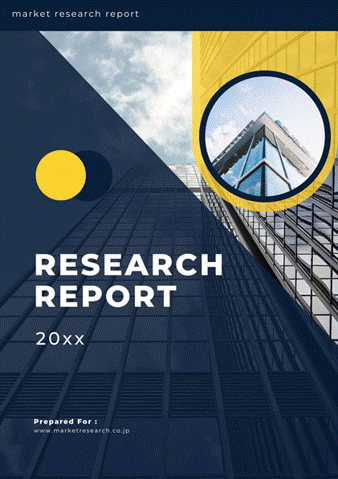 | • レポートコード:MRC2103B061 • 出版社/出版日:Mordor Intelligence / 2021年1月 • レポート形態:英文、PDF、124ページ • 納品方法:Eメール(受注後2-3営業日) • 産業分類:情報&通信技術 |
| Single User | ¥629,000 (USD4,250) | ▷ お問い合わせ |
| Team User | ¥703,000 (USD4,750) | ▷ お問い合わせ |
| Corporate License | ¥1,110,000 (USD7,500) | ▷ お問い合わせ |
• お支払方法:銀行振込(納品後、ご請求書送付)
レポート概要
| 本書では、ソフトウェア定義セキュリティの世界市場を調査対象とし、イントロダクション、調査手法、エグゼクティブサマリー、市場動向、展開モード別(クラウド、オンプレミス)分析、エンドユーザー別(通信サービスプロバイダー、クラウドサービスプロバイダー、プロバイダー企業)分析、地域別分析、競争状況、投資分析、市場機会・将来動向などを整理いたしました。 ・イントロダクション ・調査手法 ・エグゼクティブサマリー ・市場動向 ・ソフトウェア定義セキュリティの世界市場規模:展開モード別(クラウド、オンプレミス) ・ソフトウェア定義セキュリティの世界市場規模:エンドユーザー別(通信サービスプロバイダー、クラウドサービスプロバイダー、プロバイダー企業) ・ソフトウェア定義セキュリティの世界市場規模:地域別 ・競争状況 ・投資分析 ・市場機会・将来動向 |
Software-defined security market registered a CAGR of 33.7% over the forecast period 2021- 2026. Software-defined security enables the implementation of dynamic security in the network by means of a controller that is driven by software or an application. Such security model helps in shielding several security-related issues such as network segmentation, threat detection, intrusion alert and access control which are regulated and managed by the security software.
Key Market Trends
Cloud Is Driving Software Defined Security
– There has been a strong shift from a few years ago when most information security professionals saw the cloud as limited secure. The cloud is now seen as transformational rather than as a possible security posture trade-off. This threatens security hardware and infrastructure players, who have profited from growing cyberthreats and expanding increasingly connected networks. The cloud may prove to be the driver of security transformation.
– Cloud infrastructure is being architected for new, rising demands, especially relevant to horizontal and vertical scale and security. Cloud environments will frequently adopt software and service-centric security solutions that can climb globally and seamlessly, without location-specific restrictions or constraints.
– Moreover, digitalization will add to cloud delivery pressures and force IT into more software and services and away from hardware-defined tradeoffs. This, coupled with buyer consolidation and commoditization, will make infrastructure-as-a-service (IaaS) and managed service providers powered by software-defined abilities much more powerful than conventional hardware vendors. Due to these determinants among others, software-defined technologies are predicted to skyrocket in the subsequent years.
North America Accounts for the Largest Share in the Software Defined Security Market
– The United States is one of the largest consumers of cloud software-defined security in the world. This could be attributed to the presence of large enterprises, growing frequency of cyber-attacks, and the increasing number of hosted servers in the country. Many cloud security-providing companies are headquartered in the United States, and the country is home to approximately 63% of the world’s privately-owned cybersecurity companies. Most of the companies pilot their new services in the country before launching and them globally.
– The rapid adoption of new technology in the country and growing focus on security are pushing the market forward. Presence of large cloud service providers in the country, such as Microsoft and Amazon, is playing a significant role in the growth of the cloud security market. US federal, state, and local government agencies rank last in cybersecurity compared to 17 major private industries, including transportation, retail, and healthcare. Presently, however, the government in this region has tightened the security norms to provide better cloud security.
– With higher penetration levels of medium- and large-scale companies, compared to the rest of the market, this segment of the market is expected to be the main buyer of software defined security solutions. Also, as smaller enterprises access their cyber exposures, growth in adoption of cloud-based solutions is expected. Moreover, there is huge growth potential in other industry segments, in the country, such as manufacturing, energy, and utilities, as they have already migrated to digital-transformed methods of operations and are now beginning to get a better understanding of their cyber exposure.
Competitive Landscape
The global software-defined Security Market is highly fragmented, as several cyber threats are forcing governments and respective industries to invest more on their cyberspace. Increasing investment is driving many new players that offer solutions at lower prices into the market, which makes the market competitive. Some of the key players in the market are IBM Corporation, Intel Corporation, EMC Corporation, Cisco Systems Inc. These players are constantly innovating and upgrading their product offerings to cater to the increasing market demand.
– April 2019 – Intel and Google cloud announced a strategic partnership to develop Anthos reference design to simplify deployment across on-premises data centers and clouds.
– January 2019 – Cisco acquired Ensoft Ltd. to simplify service provider networks through automation and programmability. Ensoft, a privately-held company headquartered in Harpenden, England, provides software solutions for service provider networks.
Reasons to Purchase this report:
– The market estimate (ME) sheet in Excel format
– 3 months of analyst support
1 INTRODUCTION
1.1 Study Deliverables
1.2 Study Assumptions
1.3 Scope of the Study
2 RESEARCH METHODOLOGY
3 EXECUTIVE SUMMARY
4 MARKET DYNAMICS
4.1 Market Overview
4.2 Introduction to Market Drivers and Restraints
4.3 Market Drivers
4.3.1 Requirement for Quicker Response and Increased Security
4.3.2 Rise in Cloud Services Adoption
4.4 Market Restraints
4.4.1 Lack of Security Awareness in Virtualization Environment
4.4.2 Industry Standard Deficiency
4.5 Industry Attractiveness – Porter’s Five Force Analysis
4.5.1 Threat of New Entrants
4.5.2 Bargaining Power of Buyers/Consumers
4.5.3 Bargaining Power of Suppliers
4.5.4 Threat of Substitute Products
4.5.5 Intensity of Competitive Rivalry
5 MARKET SEGMENTATION
5.1 By Deployment Mode
5.1.1 Cloud
5.1.2 On-Premises
5.2 By End-user
5.2.1 Telecom Service Providers
5.2.2 Cloud Service Providers
5.2.3 Providers Enterprises
5.3 Geography
5.3.1 North America
5.3.2 Europe
5.3.3 Asia Pacific
5.3.4 South America
5.3.5 Middle East and Africa
6 COMPETITIVE LANDSCAPE
6.1 Company Profiles
6.1.1 Cisco Systems, Inc.
6.1.2 Intel Corporation
6.1.3 VMware, Inc.
6.1.4 Symantec Corporation
6.1.5 EMC Corporation
6.1.6 Check Point Software Technologies Ltd.
6.1.7 Fortinet, Inc.
6.1.8 Juniper Networks, Inc.
6.1.9 Versa Networks Inc
6.1.10 Citrix Systems Inc
6.1.11 Palo Alto Networks
7 INVESTMENT ANALYSIS
8 MARKET OPPORTUNITIES AND FUTURE TRENDS